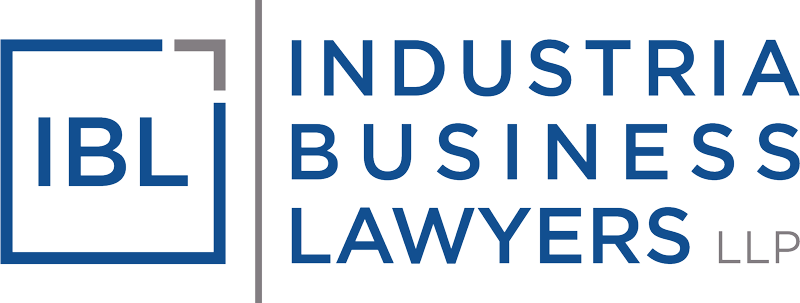The recent FIT-21 crypto regulatory bill has sparked significant debate within the industry. It was formally introduced in Congress by a bipartisan group of legislators who recognize the importance of establishing a clear regulatory framework for digital assets.
The bill aims to address regulatory uncertainties and provide a structured approach to handling cryptocurrencies and related technologies. One of the many comments about this bill is a notable example being that of our colleague, deputy legal counsel Joshua Riezman of leading crypto “market-maker” GSR Markets, Ltd., in an editorial critique.
Riezman’s commentary focuses on the potential negative impact of FIT-21 on market structure, arguing that the bill, as currently drafted, could lead to unintended and harmful consequences.
We concur with Riezman’s critique and believe it is more than sufficient reason to reconsider the bill.
However, we believe it is equally important that regulators and advocates not forget that “utility tokens” should be acknowledged as fundamentally non-securities and regulated accordingly.
In support of this we would observe the following points generally, and critiquing FIT-21 specifically:
- CFTC Jurisdiction: The bill overlooks the Commodity Futures Trading Commission’s (CFTC) use-based regulatory framework and jurisdiction, failing to distinguish any tokens as non-security utility tokens despite their intended use within specific ecosystems, arguably leading to a mismatched regulatory approach.
- Major Legal Precedents: FIT-21 disregards important legal precedents like the Forman case, which distinguishes between financial investments and use-based transactions. This neglect risks overregulating utility-based scenarios (something never intended under the Securities Act of 1933), in turn, unnecessarily stifling related innovation.
- Lack of Safe Harbor Provisions: The omission of provisions similar to or in the spirit of SEC Commissioner Hester Peirce’s proposed safe harbor, which would allow a grace period for token development and decentralization, ignores the practical realities of utility token projects, their development and the intent of purchasers of tokens of these projects.
- Global Regulatory Divergence: FIT-21’s approach contrasts with foreign and multinational frameworks like the European Union’s MiCA, which does not classify utility tokens as securities. This divergence risks isolating the U.S. from global crypto innovation and driving technological advancement abroad.
These points are discussed in greater detail below.
CFTC’s Jurisdiction and Use-Based Primacy
The Commodity Futures Trading Commission (CFTC) regulates commodities. Commodities are defined, e.g., by Dictionary.com as “something of use, advantage, or value” (inter alia).1
Utility tokens, designed for use within specific ecosystems, align with this definition, as they are intended for consumption rather than financial investment.
The FIT-21 bill fails to consider this use-based primacy by failing to distinguish utility tokens (by whatever name) and treating all tokens as securities, therein overlooking the entire, arguably better-fit regulatory framework established by the CFTC.
It is true that the FIT-21 bill defines a “functional system” (in the blockchain context) as use-based, and provides various provisions that a blockchain system may be one. But the main clause of the bill bases less-restrictive treatment on a blockchain token’s being both a functional system and certified to be a decentralized system. This makes functional utility a property which is improperly assumed to be coextensive with being decentralized, and indeed, makes functional utility subsidiary to “decentralization status.”
To illustrate how weird this is, an analogous example would be if the SEC declared a lease contract a security just because the renter relies on a property management company, rather than every renter fixing and maintaining their rented unit themselves.
Perhaps just as concerning, certification of decentralization status under FIT-21 is placed under the exclusive jurisdiction of the SEC, not the CFTC – again, arguably, at cross-purposes with a commodity-like instrument.
This questionable orientation would likely lead to an inappropriate regulatory approach that fails to recognize the unique nature and purpose of utility tokens as opposed to financial investments, causing a perpetual purpose-based mismatch between the regulated objects and the regulatory scheme.
Major Securities Precedents: The Forman Case
The United Housing Foundation, Inc. v. Forman case (United Housing Foundation, Inc. v. Forman, 421 U.S. 837. 1975) is a cornerstone precedent distinguishing between financial investments and use-based transactions.
The Supreme Court in Forman clarified that shares purchased for their utility (such as leasing a housing unit) are not securities. This principle should apply to utility tokens, which are designed for specific functionalities within a blockchain ecosystem (i.e., use), rather than for investment.
FIT-21’s disregard for this precedent undermines established legal distinctions crucial for fair regulation.
The Animating Spirit of the 1-Year Restricted Period for Private Placements
The 1-year restricted period under the Securities Act and the SEC’s regulations aims to ensure that securities are initially held by long-term investors, reducing the risk of rapid resale and market manipulation.
After this period, the SEC typically does not regulate transfers between private, non-issuer, non-professional parties.
This approach acknowledges the lower risk in such transfers and reveals a rationale that is arguably just as applicable to the scenario of pre-launch utility tokens.
By failing to acknowledge the commonalities in purpose between private placement securities regulations (especially early-stage venture stock) and utility token scenarios, FIT-21 fails to consider how a similar, time-based safe harbor approach might be the best fit.
SEC Commissioner Hester Peirce’s Proposed Safe Harbor
Commissioner Hester Peirce’s safe harbor proposal(Token Safe Harbor Proposal 2.0 (2021)) provided a three-year grace period for developers to achieve decentralization and demonstrate the utility of their tokens.
This proposal recognized the developmental phase of utility tokens and aimed to support innovation while ensuring regulatory compliance. FIT-21 contains nothing of the sort, ignoring practical realities of advance purchases in token-developing projects by the general public, potentially stifling technological advancement.
Previous Crypto Legislative Bills: Token Taxonomy Act
The Token Taxonomy Act of 20192 offered a nuanced approach by defining tokens based on their functionality and exempting those with genuine utility from being classified as securities.
This bill acknowledged the diverse nature of digital tokens and provided a regulatory framework that balanced investor protection with technological innovation.
In contrast, FIT-21’s broad classification fails to recognize these distinctions, leading to a one-size-fits-all approach that is both impractical and likely to be detrimental to technological progress, as it remains unexplained how the purposes underlying the Token Taxonomy Act might have since vanished or become irrelevant.
The Token Taxonomy Act was far from the only example of providing utility and other blockchain token classifications based on characteristics and intent; a few more U.S. Congressional legislative proposals from recent years are highlighted below:
Crypto-Currency Act of 2020, H.R. 6154, 116th Cong. (2020):
- Classifies digital assets into three categories: crypto-commodities, crypto-currencies, and crypto-securities.
- Assigns regulatory authority to the CFTC, the Secretary of the Treasury, and the SEC based on the classification.
Digital Commodity Exchange Act (DCEA) (2020):
- Proposes a framework for digital commodity trading platforms to register with the Commodity Futures Trading Commission (CFTC).
- Recognizes the distinction between digital commodities (including utility tokens) and securities.
Stablecoin Tethering and Bank Licensing Enforcement (STABLE) Act, H.R. 8827, 116th Cong. (2020):
- Aims to regulate stablecoins but acknowledges the broader digital asset ecosystem, including utility tokens.
- Focuses on requiring stablecoin issuers to obtain banking charters and adhere to banking regulations.
Foreign Legal Regimes
Internationally, utility tokens are generally not classified as securities. For example, the European Union as a whole has no “investment contract” notion, and therefore, utility tokens have never been putatively regulated under European securities law (and last we checked pandemonium had not ensued in Europe as a result of the past ten or so years of token sales activity!).
Indeed, the European Union primarily takes an approach of transparency and anti-fraud/consumer protection; under the entering-into-force MiCA regulation, this will take the form of simple notice-filing requirements for utility tokens, rather than treating utility tokens as restricted securities.
FIT-21’s failure to adopt a similar approach places the U.S. at odds with emerging global best practices and standards, potentially driving innovation abroad.
By ignoring the regulatory frameworks adopted by other jurisdictions in what is inherently a global market and technological landscape, FIT-21 risks isolating the U.S. from global innovation.
Conclusion
In sum, we believe that additional legal considerations going beyond market dynamics concerns (while enough to thoroughly undermine FIT-21) further motivate the need to rethink the bill. The lack of a non-security safe harbor for utility tokens ignores established legal principles, practical regulatory approaches, and burgeoning international standards.
To foster innovation and protect consumers, it is crucial that any reasonably-comprehensive U.S. national blockchain regulatory bill incorporates a more nuanced framework that distinguishes between the fundamentally-different utility-centric and financial investment-centric scenarios.
A well-considered regulatory approach will not only protect consumers and investors but also encourage technological advancement and maintain the U.S.’s position as a leader in the global digital economy.
Footnotes
- The CFTC’s own statutory definition of a “commodity,” ironically, isn’t terribly illuminating, as it is essentially a collection of examples and a few exclusions, as opposed to a true definition: “The term “commodity” means wheat, cotton, rice, corn, oats, barley, rye, flaxseed, grain sorghums, mill feeds, butter, eggs, Solanum tuberosum (Irish potatoes), wool, wool tops, fats and oils (including lard, tallow, cottonseed oil, peanut oil, soybean oil, and all other fats and oils), cottonseed meal, cottonseed, peanuts, soybeans, soybean meal, livestock, livestock products, and frozen concentrated orange juice, and all other goods and articles, except onions (as provided by section 13–1 of this title) and motion picture box office receipts (or any index, measure, value, or data related to such receipts), and all services, rights, and interests (except motion picture box office receipts, or any index, measure, value or data related to such receipts) in which contracts for future delivery are presently or in the future dealt in;” 7 U.S. Code § 1a(9). ↩︎
- Token Taxonomy Act of 2019, H.R. 2144, 116th Cong. (2019). ↩︎

